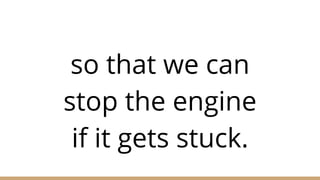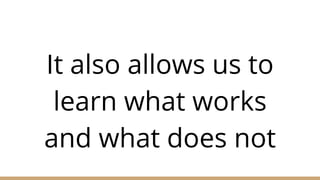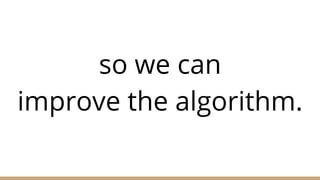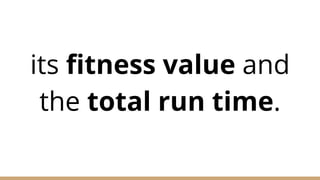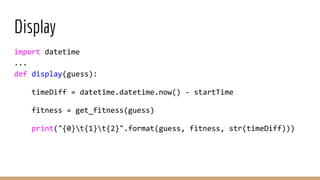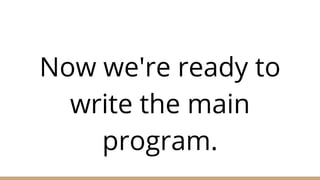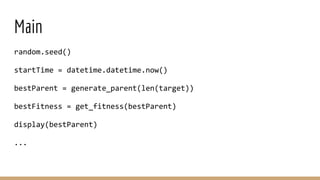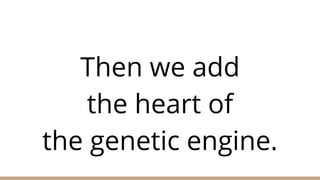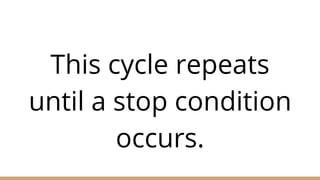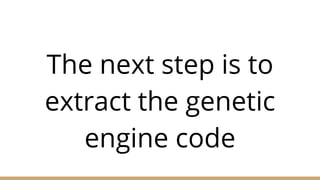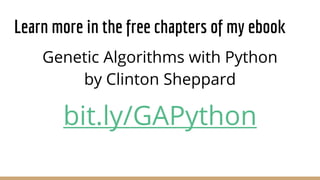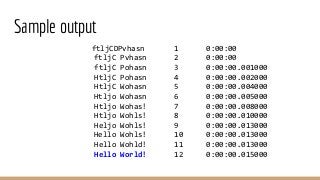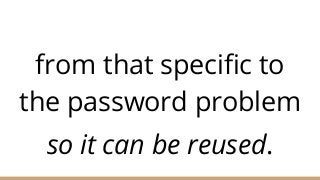Introduction to Genetic Algorithms with Python - Hello World!
- 1. Introduction to Genetic Algorithms with Python Hello World!
- 3. Reach back in your memory to a game we played as kids.
- 4. Pick a number between 1 and 10. (pick 3)
- 5. Is your number 2? No
- 6. Is it 7? No
- 7. Is it 3? Yes
- 8. That works reasonably well for 1..10 but...
- 9. it becomes boring as we increase the range to 1..100.
- 10. Why?
- 11. Because we have no way to improve our guesses.
- 12. The guess is either right or wrong
- 13. so it becomes a mechanical process.
- 14. Is it 1? No Is it 2? No Is it 3? No Is it 4? No
- 15. So, to make it more interesting
- 16. instead of no, let's say higher or lower.
- 17. (pick 3 again)
- 18. Is your number 1? Higher
- 19. 7? Lower
- 20. 3? Correct
- 21. At this point, the person who evolves the most efficient guessing strategy wins.
- 22. Domain knowledge
- 23. When playing this game we make use of domain knowledge.
- 24. For example, after this sequence: 1? Higher 7? Lower
- 25. Why wouldn't we guess 8, 9, or 10?
- 26. Because we know that those numbers are not lower than 7.
- 27. Why wouldn't we guess 1?
- 28. Because we already tried it.
- 29. We use our memory of what we've tried,
- 31. and our knowledge of numbers to make better guesses.
- 32. A genetic algorithm does not know what lower means.
- 33. It has no intelligence.
- 34. It does not learn. It will make the same mistakes every time.
- 35. It will only be as good at solving a problem
- 36. as the person who writes the code.
- 37. And yet, it can be used to find solutions to problems that
- 38. humans would struggle to solve or could not solve at all.
- 39. How is that possible?
- 40. Genetic algorithms use random exploration of the problem space
- 41. combined with evolutionary processes like mutation and
- 42. crossover - exchange of genetic information - to improve guesses.
- 43. But also, because they have no experience in the problem domain
- 44. they try things a human would never think to try.
- 45. Thus, a person using a genetic algorithm
- 46. may learn more about the problem space and potential solutions.
- 47. This helps them to improve the algorithm, in a virtuous cycle.
- 48. What can we learn from this?
- 49. Genetic algorithms should make informed guesses.
- 51. Let's see how this applies to guessing a password.
- 52. We'll start by randomly generating an initial sequence of letters
- 53. then mutate/change one random letter in that sequence
- 54. at a time until the sequence of letters is "Hello World!"
- 55. Psuedo code _letters = [a..zA..Z !] target = "Hello World!" guess = get 12 random letters from _letters while guess != target: index = get random value from [0..length of target] guess[index] = get 1 random value from _letters
- 56. If you try this in your favorite programming language...
- 57. you'll find that it performs worse than guessing numbers using yes and no
- 58. because it cannot tell when one guess is better than another.
- 59. So, let's help it make an informed guess
- 60. by telling it how many guessed letters are in the correct spots.
- 62. because only the 4th letter of each word is correct.
- 63. The number 2 indicates how close the answer is to correct.
- 64. This is called the fitness value.
- 65. "hello_world?" would get a fitness value of 9
- 66. because 9 letters are correct. Only the h, w, and ? are wrong.
- 67. First Program
- 68. Now we're ready to write some Python.
- 69. Start with a set of letters for genes and a target password
- 70. Genes and target geneSet = " abcdefghijklmnopqrstuvwxyzABCDEFGHIJKLMNOPQRSTUVWXYZ!." target = "Hello World!" Note: You can run the code in your browser at https://repl.it/CZL1/1
- 71. Generate a guess
- 72. Next we need a way to generate a random string of letters.
- 73. Generate parent import random … def generate_parent(length): genes = [] while len(genes) < length: sampleSize = min(length - len(genes), len(geneSet)) genes.extend(random.sample(geneSet, sampleSize)) return ''.join(genes)
- 74. Fitness
- 75. The fitness value the genetic algorithm provides
- 76. is the only feedback the engine gets
- 77. to guide it toward a solution.
- 78. Our fitness value is the total number of correct letters.
- 79. Get fitness def get_fitness(guess): return sum(1 for expected, actual in zip(target, guess) if expected == actual)
- 80. Mutation
- 81. We also need a way to produce a new guess
- 82. by mutating the current guess.
- 83. We start by converting the parent string to an array.
- 84. Mutate def mutate(parent): childGenes = list(parent) ...
- 85. Then replace 1 letter in the array with a randomly selected one
- 86. Mutate (cont'd) ... index = random.randint(0, len(parent) - 1) newGene, alternate = random.sample(geneSet, 2) childGenes[index] = alternate if newGene == childGenes[index] else newGene ...
- 87. and then recombine the result into a string.
- 89. Display
- 90. Next, it is important to monitor what is happening
- 91. so that we can stop the engine if it gets stuck.
- 92. It also allows us to learn what works and what does not
- 93. so we can improve the algorithm.
- 94. To do that we display a visual representation of the gene sequence,
- 95. which may not be the literal gene sequence,
- 96. its fitness value and the total run time.
- 97. Display import datetime ... def display(guess): timeDiff = datetime.datetime.now() - startTime fitness = get_fitness(guess) print("{0}t{1}t{2}".format(guess, fitness, str(timeDiff)))
- 98. Sample output ftljCDPvhasn 1 0:00:00
- 99. Main
- 100. Now we're ready to write the main program.
- 101. We start with a random guess.
- 102. Main random.seed() startTime = datetime.datetime.now() bestParent = generate_parent(len(target)) bestFitness = get_fitness(bestParent) display(bestParent) ...
- 103. Then we add the heart of the genetic engine.
- 104. It is a loop that creates a guess,
- 105. Main loop while True: child = mutate(bestParent) ...
- 106. requests the fitness for that guess
- 107. Main loop (cont'd) ... childFitness = get_fitness(child) ...
- 108. then compares it to the fitness of the previous best guess
- 109. Main loop (cont'd) … if bestFitness >= childFitness: continue display(child) if childFitness >= len(bestParent): break ...
- 110. and keeps the one with the best fitness.
- 111. Main loop (cont't) ... bestFitness, bestParent = childFitness, child
- 112. This cycle repeats until a stop condition occurs.
- 113. Here, we stop when all the letters match the target.
- 114. Run
- 115. Sample output ftljCDPvhasn 1 0:00:00 ftljC Pvhasn 2 0:00:00 ftljC Pohasn 3 0:00:00.001000 HtljC Pohasn 4 0:00:00.002000 HtljC Wohasn 5 0:00:00.004000 Htljo Wohasn 6 0:00:00.005000 Htljo Wohas! 7 0:00:00.008000 Htljo Wohls! 8 0:00:00.010000 Heljo Wohls! 9 0:00:00.013000 Hello Wohls! 10 0:00:00.013000 Hello Wohld! 11 0:00:00.013000 Hello World! 12 0:00:00.015000
- 116. Congratulations! You've written a genetic algorithm in Python!
- 117. Next step
- 118. The next step is to extract the genetic engine code
- 119. from that specific to the password problem so it can be reused.
- 120. Ready for more? Continue the lesson on CodeProject or learn about my book.
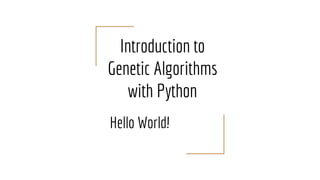




























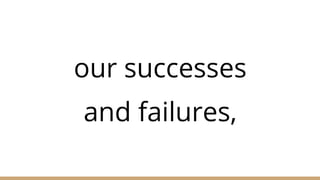
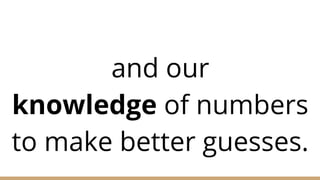


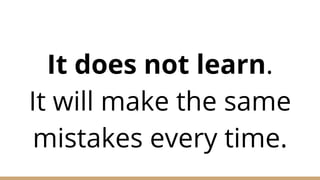


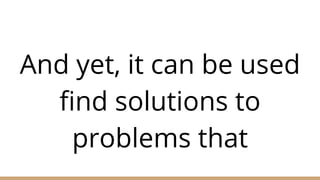


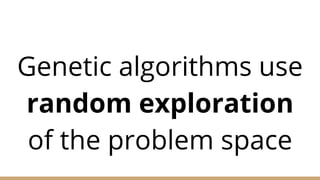
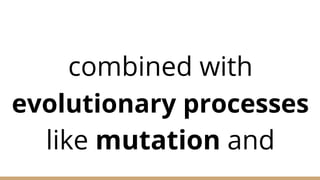

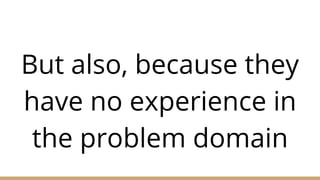
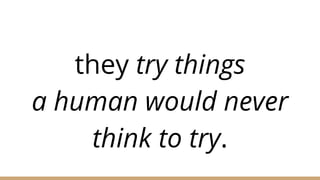
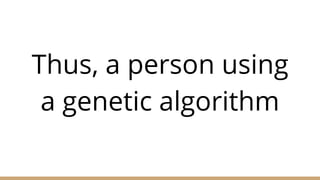
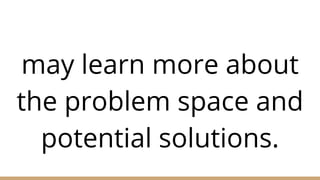
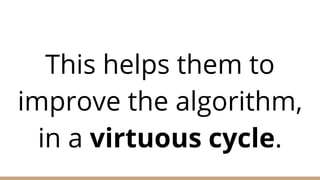

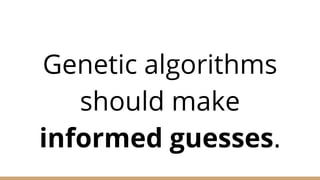
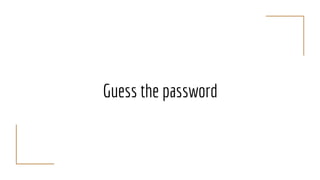
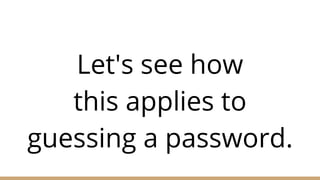
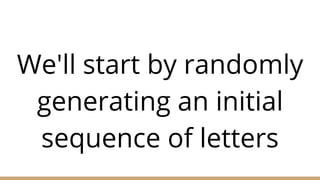
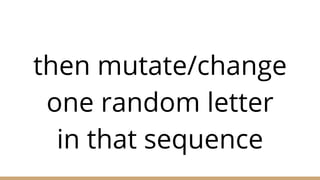
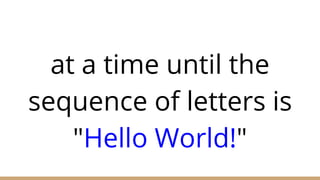
![Psuedo code
_letters = [a..zA..Z !]
target = "Hello World!"
guess = get 12 random letters from _letters
while guess != target:
index = get random value from [0..length of target]
guess[index] = get 1 random value from _letters](https://image.slidesharecdn.com/geneticalgorithmswithpython-helloworld-160522000530/85/Introduction-to-Genetic-Algorithms-with-Python-Hello-World-55-320.jpg)
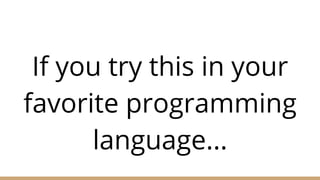
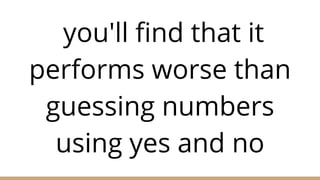


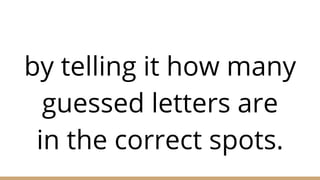




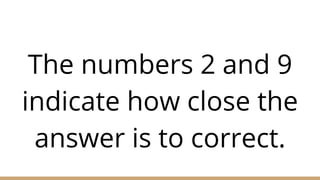


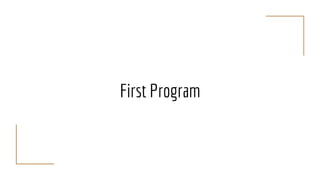
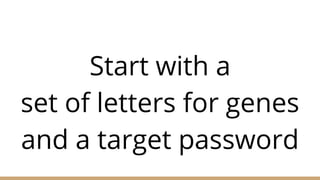


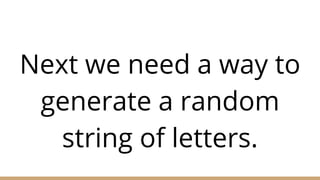
![Generate parent
import random
…
def generate_parent(length):
genes = []
while len(genes) < length:
sampleSize = min(length - len(genes), len(geneSet))
genes.extend(random.sample(geneSet, sampleSize))
return ''.join(genes)](https://image.slidesharecdn.com/geneticalgorithmswithpython-helloworld-160522000530/85/Introduction-to-Genetic-Algorithms-with-Python-Hello-World-73-320.jpg)

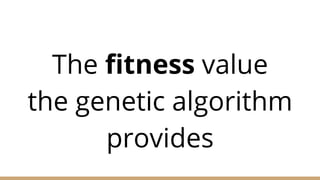
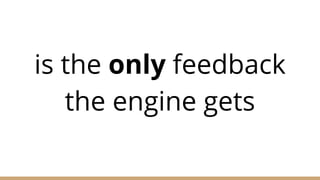

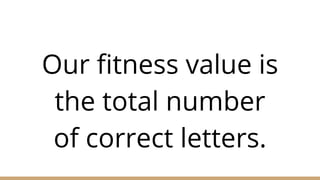
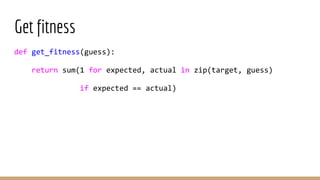
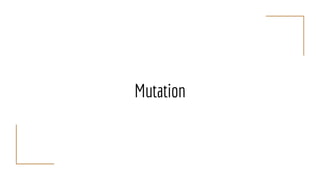



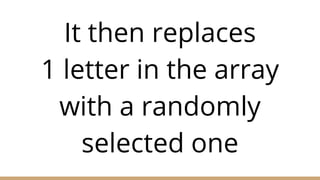

![Mutate (cont'd)
...
index = random.randint(0, len(parent) - 1)
newGene, alternate = random.sample(geneSet, 2)
childGenes[index] = alternate
if newGene == childGenes[index]
else newGene
...](https://image.slidesharecdn.com/geneticalgorithmswithpython-helloworld-160522000530/85/Introduction-to-Genetic-Algorithms-with-Python-Hello-World-86-320.jpg)


